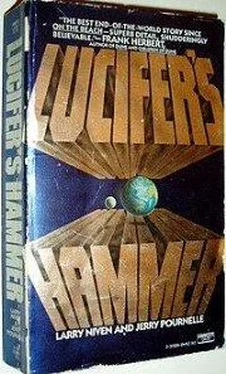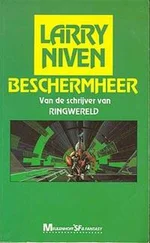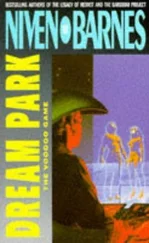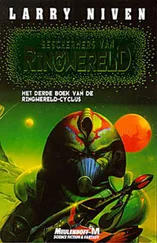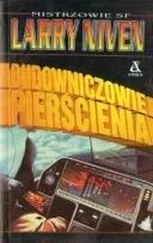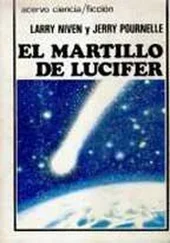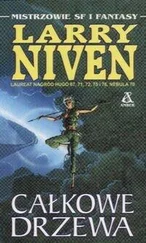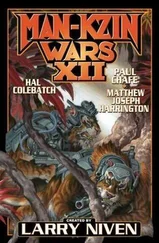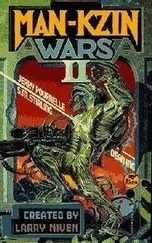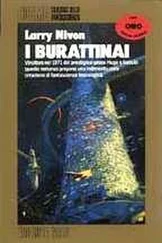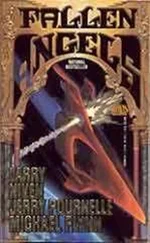“Here we are,” the PR flack said.
The office looked good. Books on the wall. Incomprehensible equations on the blackboards. Books on every flat surface in view, IBM print-outs all over the expensive teak desk.
“Dr. Sharps, Harvey Randall,” the flack said. She hovered near the door.
Charles Sharps wore glasses that curved around to cover his whole field of view; very modernistic, vaguely insectile against his long pale face. His hair was black and straight, worn short. His fingers played with a felt-tip pen, or fished into his pockets, always moving. He looked to be about thirty, but might have been older, and he wore a sport jacket and tie.
“Now let’s get this straight,” Sharps said. “You want a lecture on comets. For yourself or for the public?”
“Both. Simple for me camera, as much as I can understand for me. If it’s not too much trouble.”
“Too much trouble?” Sharps laughed. “How could it be too much trouble? Your network tells NASA you want to do a documentary on space, and NASA sends up red rockets. Right, Charlene?”
The PR flack nodded. “They asked us to cooperate—”
“Cooperate.” Sharps laughed again. “I’d jump through hoops if I thought it would help get a budget. When do we start?”
“Now, please,” Harvey said. “The crew will set up while we chat. Just ignore them. I take it you’re the resident expert on comets.”
“I suppose so,” Sharps said. “Actually I like asteroids, but somebody has to study comets. I gather you’re interested mainly in Hamner-Brown.”
“Right.”
Charlie caught Harvey’s eye. They were ready. Harvey gave them the nod. Manuel listened and watched the indicator, and said, “Speed.”
Mark stepped in front of the camera. “Sharps interview, take one.” The chalkboard came together with a loud clack! Sharps jumped. They always did, first time. Charlie busied himself with the camera. He kept it aimed at Sharps; they’d film Harvey asking the questions later, when Sharps wasn’t around.
“Tell me, Dr. Sharps, will Hamner-Brown be visible to the naked eye?”
“Don’t know,” Sharps said. He sketched something unlikely on the IBM print-out in front of him. The sketch might have been of a pair of mating Loch Ness monsters. “A month from now we’ll know much better. We already know it’s going to get as close to the Sun as Venus, but — ” He broke off and looked at the camera “What level do you want this at?”
“Anything you like,” Harvey said. “Make me understand, then we can decide how to tell the public.”
Sharps shrugged. “All right. So there’s the solar system out there.” He waved toward one wall. A big chart of the planets and their orbits hung next to the blackboard. “Planets and moons, always where they should be. They do a great complicated dance around each other. Every planet, every moon, every little rock in the asteroid belt, all dancing to Newton’s song of gravity. Mercury got a little out of step and we had to revise the universe to make it fit.”
“How’s that?” Harvey asked. And I’d have preferred to do the poetry myself, but what the hell…
“Mercury. Orbit changes just a little every year. Not much, but more than Newton says it should. So a man named Einstein found a good explanation, and incidentally managed to make the universe a stranger place than it was before.”
“Oh. I hope we don’t need relativity to understand comets—”
“No, no. But there’s more than gravity to a comet’s orbit. That’s surprising, isn’t it?”
“Yes. Are we going to have to revise the universe again?”
“What? No, it’s simpler than that. Look…” Sharps jumped to his feet and was at the blackboard. He looked for chalk and muttered “Here you go.” Mark took chalk from his pocket and handed it.
“Thanks.” Sharps sketched a white blob, then a parabolic curve. “That’s the comet. Now let’s put in planets.” He drew two circles. “Earth and Venus.”
“I thought planets moved in elliptical orbits,” Harvey said.
“So they do, but on any scale you could draw you can’t see the difference. Now look at the comet’s orbit. Both arms of the curve look just the same, coming in and going out. Textbook parabola, right?”
“Right.”
“But here’s what the comet really looks like when it falls away from the Sun. A dense nucleus, a coma of fine dust and gas” — he was drawing again — “and a plume of dusty gas streaming away from the Sun. Ahead of the comet, going out. The tail. A big tail, a hundred million miles long, sometimes. But it’s nearly a vacuum. It has to be — if it were thick, there wouldn’t be enough matter in the comet to fill that much space.”
“Sure.”
“Okay, and again like the textbooks. Material boils out of the head of the comet into the coma. It’s a thin gas, tiny particles, so tiny that sunlight can push them around. Light pressure from the Sun makes them stream away, so the tail always faces away from the Sun. Okay? Tail follows the comet going in, leads it coming out. But—
“The stuff boils out unevenly. When the comet first falls into the system, it’s a solid mass. We think. Nobody really knows. We have several models that fit the observations. Me, I like the dirty-snowball model. The comet’s made of rocks and dust, the dirt, balled up with ices and frozen gases. Some water ice. Methane. Carbon dioxide — dry ice. Cyanogen and nitrogen, all kinds of stuff. Pockets of these gases thaw and blast out to one side or the other. Like jet propulsion, and it changes the orbit.” Sharps was at work with the chalk, holding it sideways. When he finished, the incoming arm had jogs and jiggle in it, and the outgoing arm was blurred into a wide sweep not unlike the comet’s tail. “So we don’t know how close to Earth it’s coming.”
“I see. And you don’t know how big the tail will be.”
“Right. But this seems to be a new comet. Maybe it’s never made the trip down close to the Sun before. Not like Halley’s Comet, which comes every seventy years and gets smaller each time. Comets die a little every time they pass near the Sun. They lose all that tail material forever. So each time the tail’s smaller, until eventually there’s nothing left but the nucleus, and that comes as a handful of rocks. Meteor showers. Some of our best shooting stars are pieces of old comets falling onto Earth.”
“But this one’s new—”
“That’s right. So it ought to have a spectacular tail.”
“I seem to remember people said that about Kahoutek.”
“And I seem to remember they were wrong. Wasn’t there an outfit selling commemorative medals that would show Kahoutek exactly as it appeared? You see there’s no way to know. But my guess is that Hamner-Brown will be quite a sight. And it ought to pass fairly close to Earth.”
Sharps drew a dot within the blur of the comet’s outgoing course. “There’s where we’ll be. Of course we won’t see a lot until the comet passes the Earth, because until it gets by we’ll be looking straight into the Sun to see it. Hard to observe then. But when it’s passed us, it should be quite a sight. There have been comets with tails across half the sky. See them in daytime. We’re overdue for a big comet this century.”
“Hey, doc,” Mark said. “You’ve got Earth right in that thing’s path. Could it hit us?”
Harvey turned to look daggers at Mark.
Sharps was laughing. “Chances are zillions to one against it. You see the Earth as a dot on the blackboard. Actually, if I drew this to scale you wouldn’t be able to see the Earth in the drawing. Or the comet nucleus either. So what’s the chance that a couple of pinpoints will come together?” He frowned at the board. “Of course, the tail is likely to go where we do. We might be in it for weeks.”
Читать дальше
